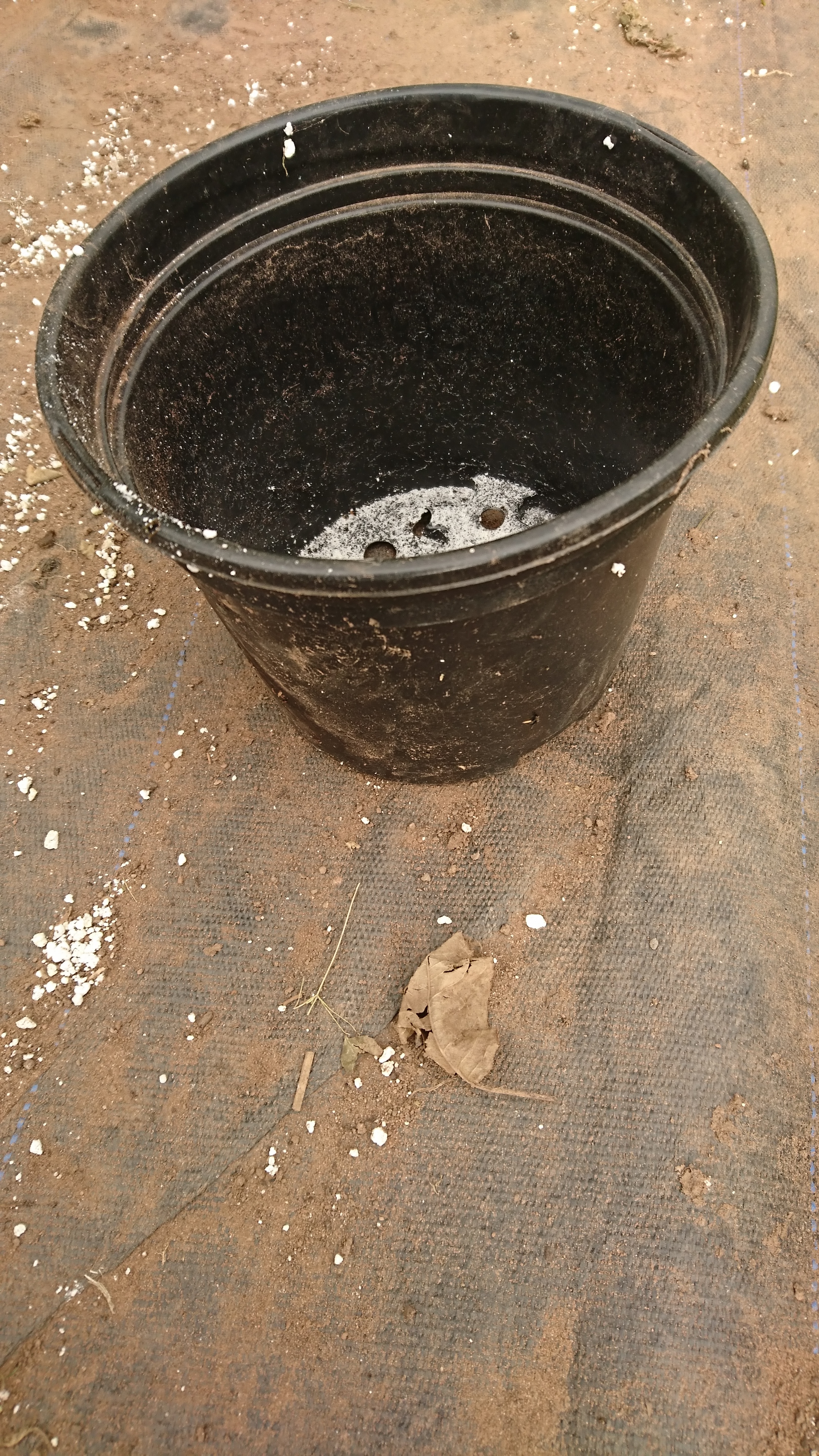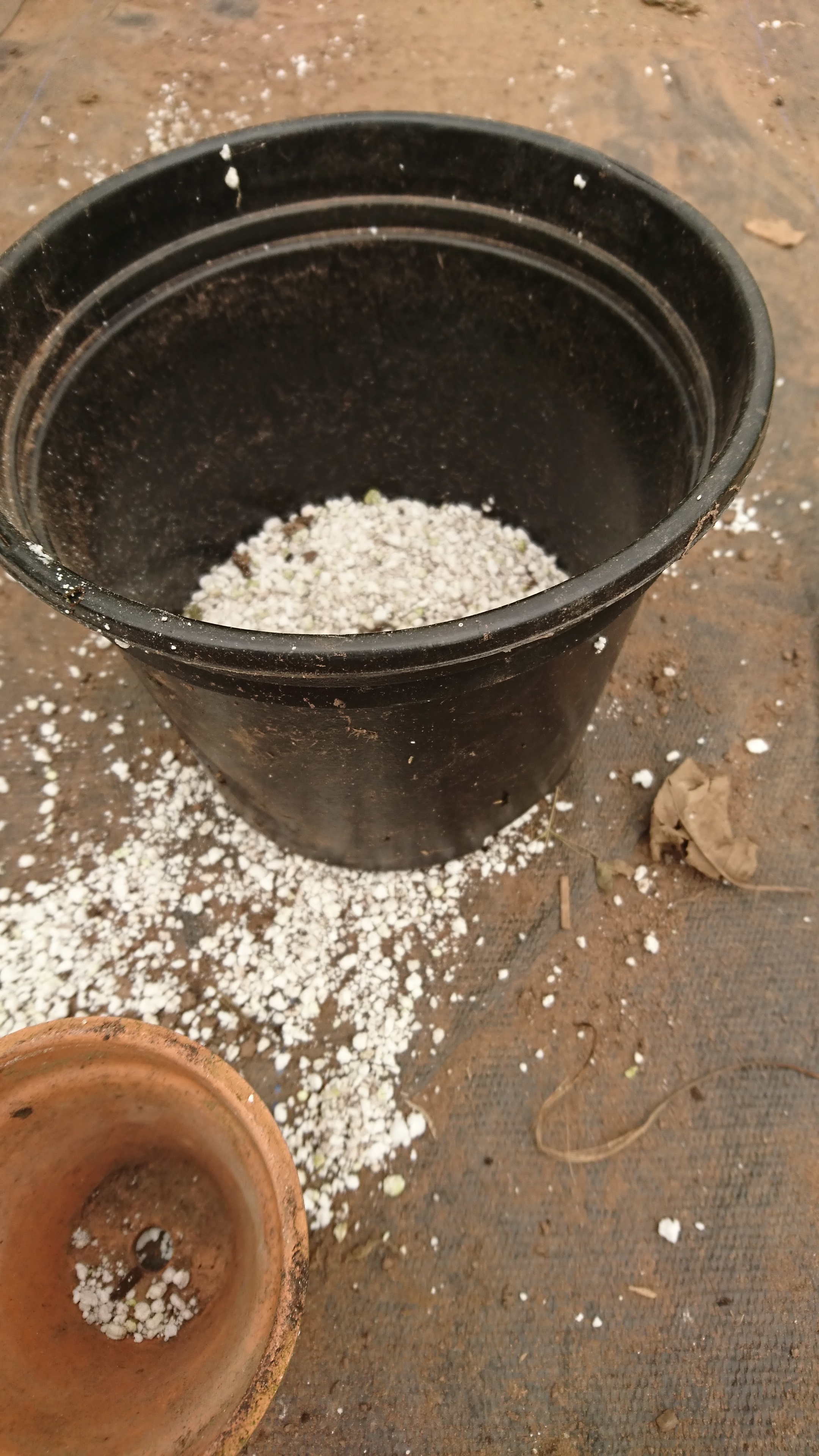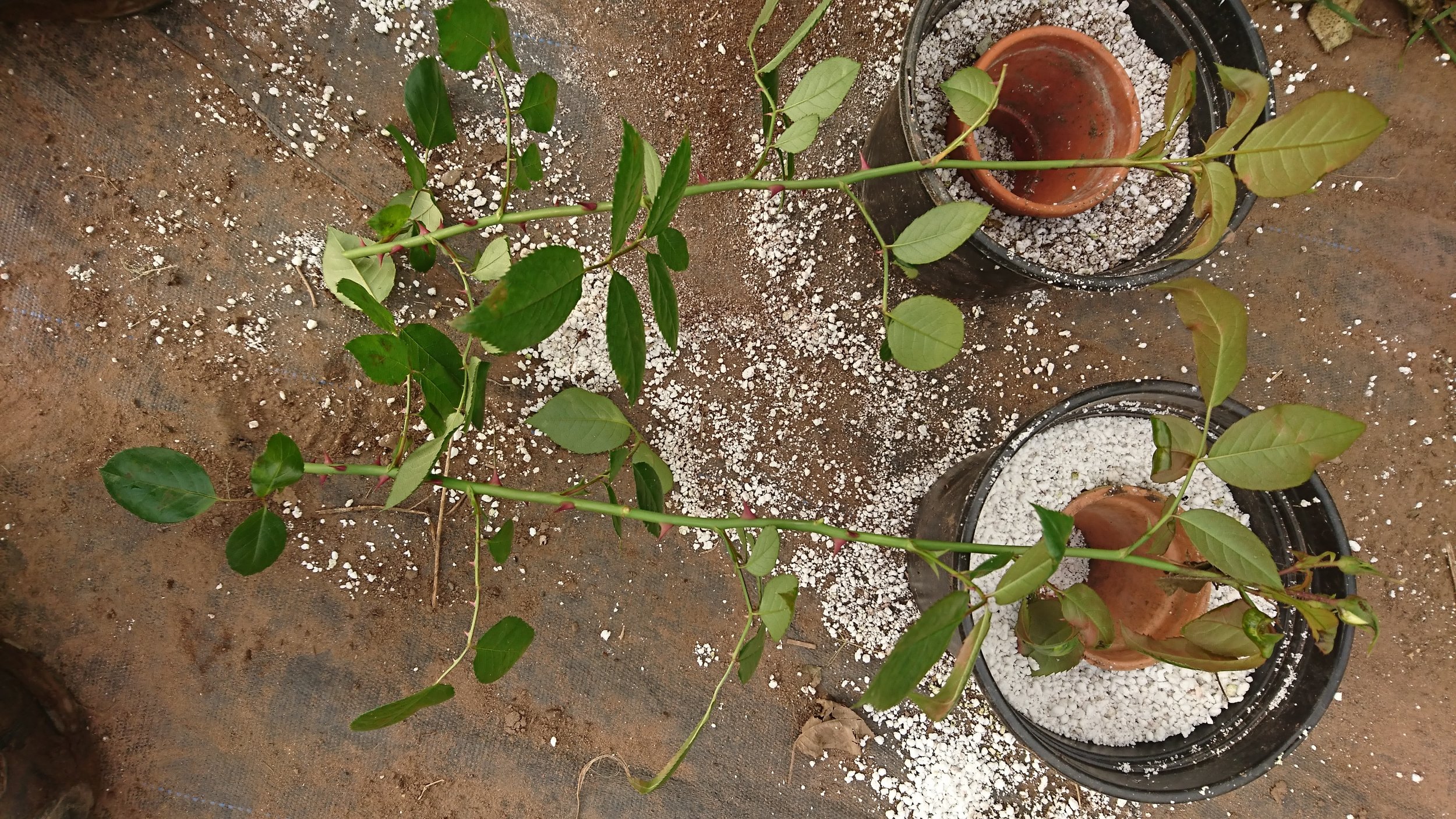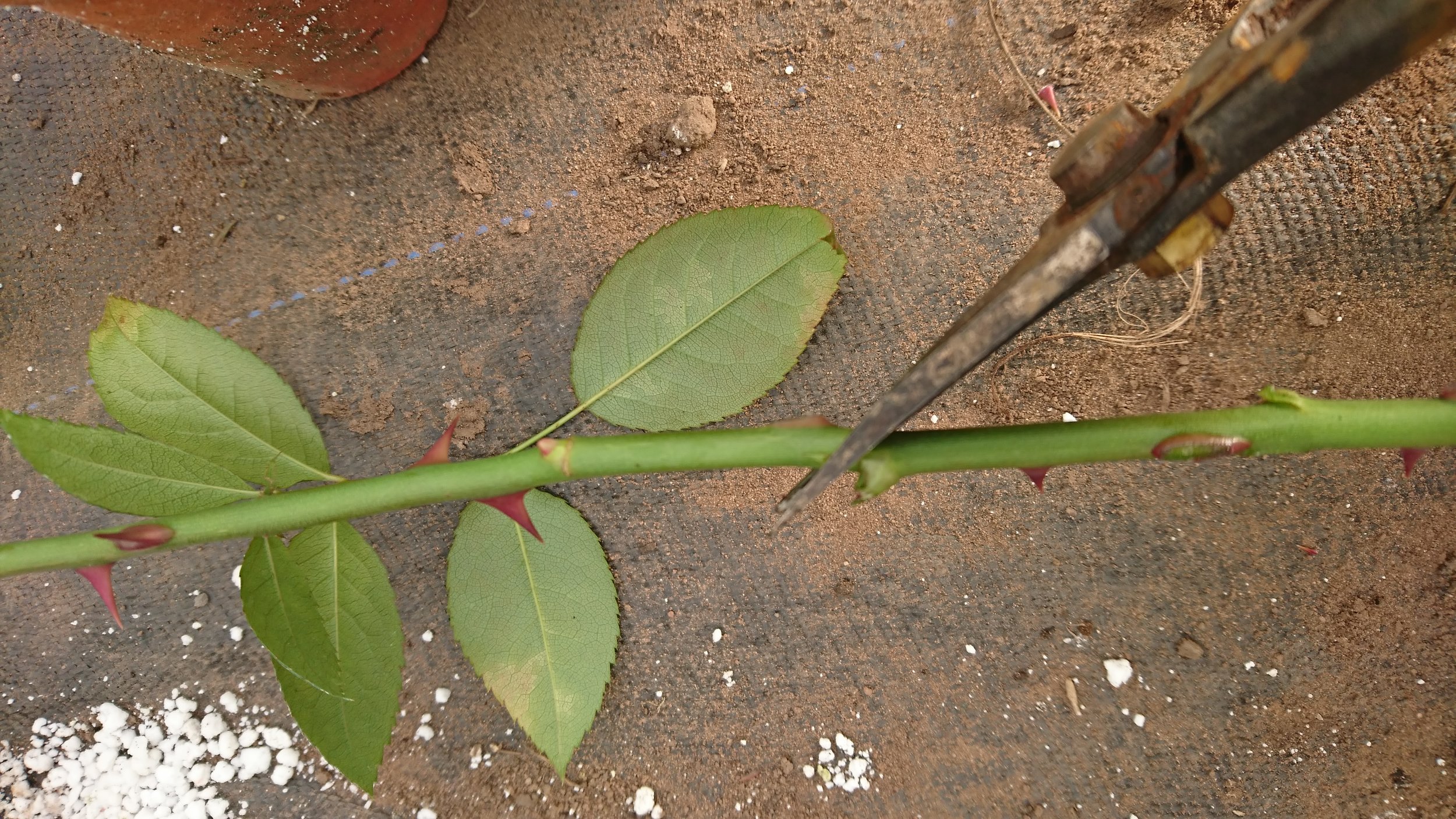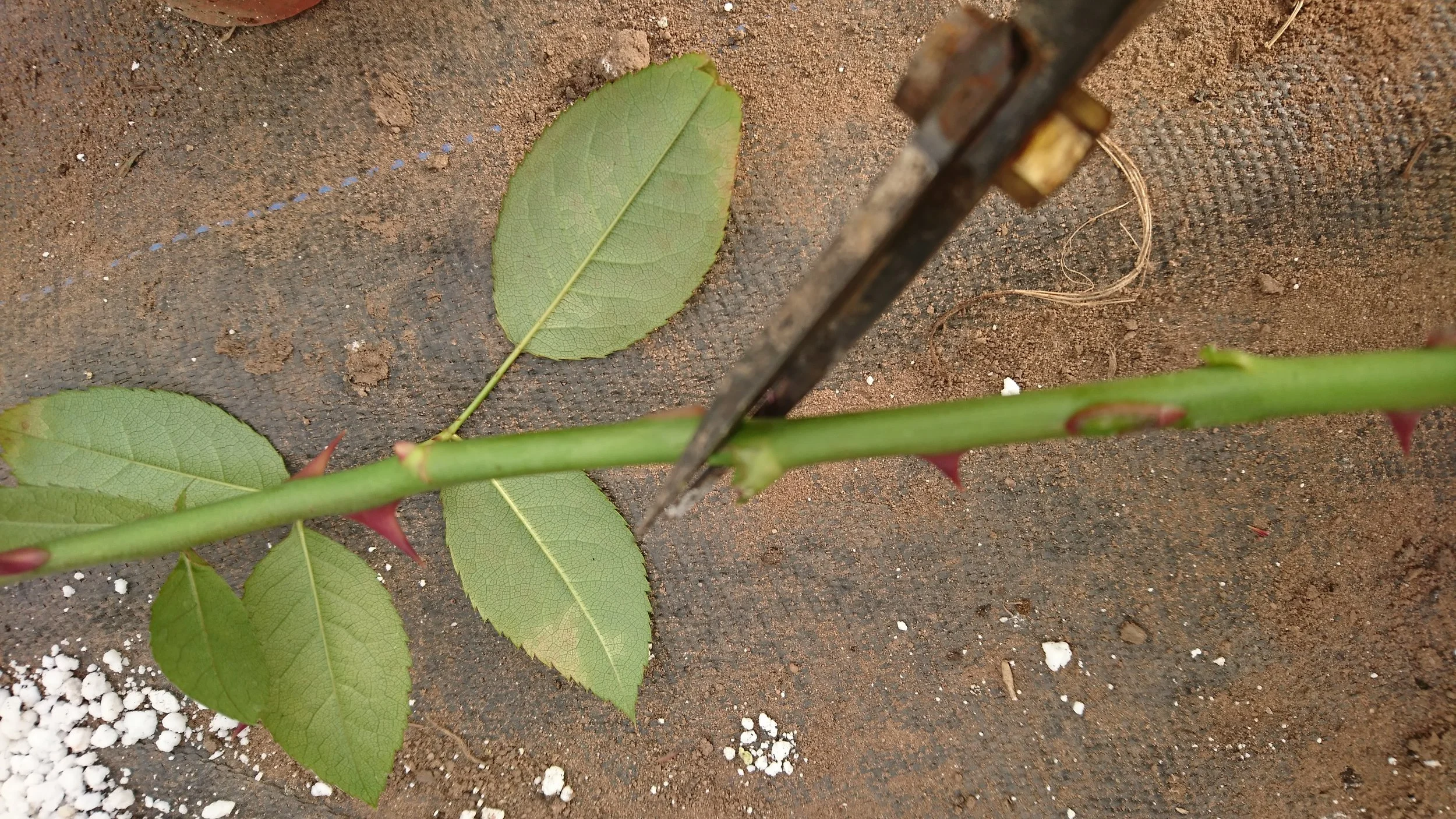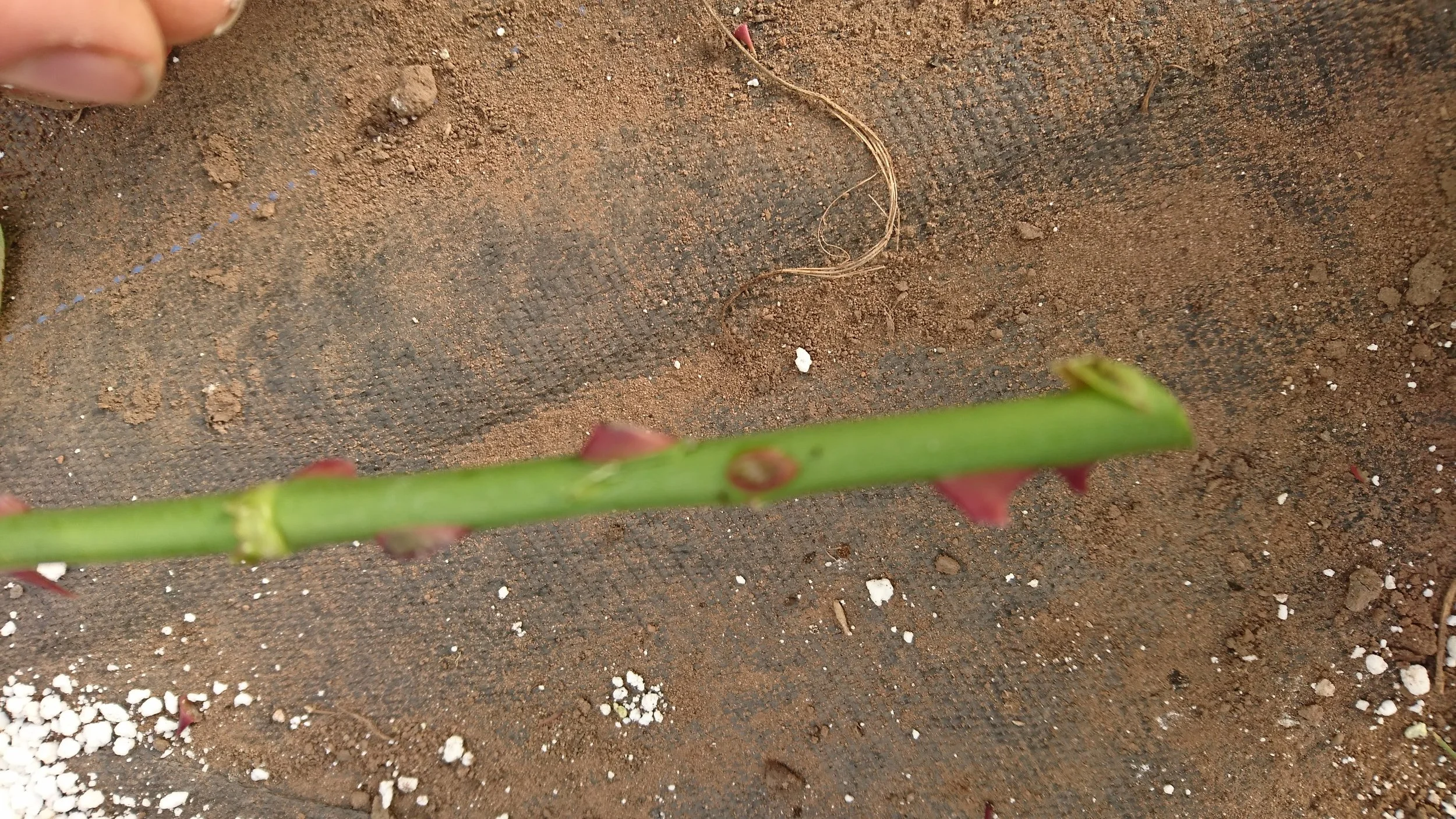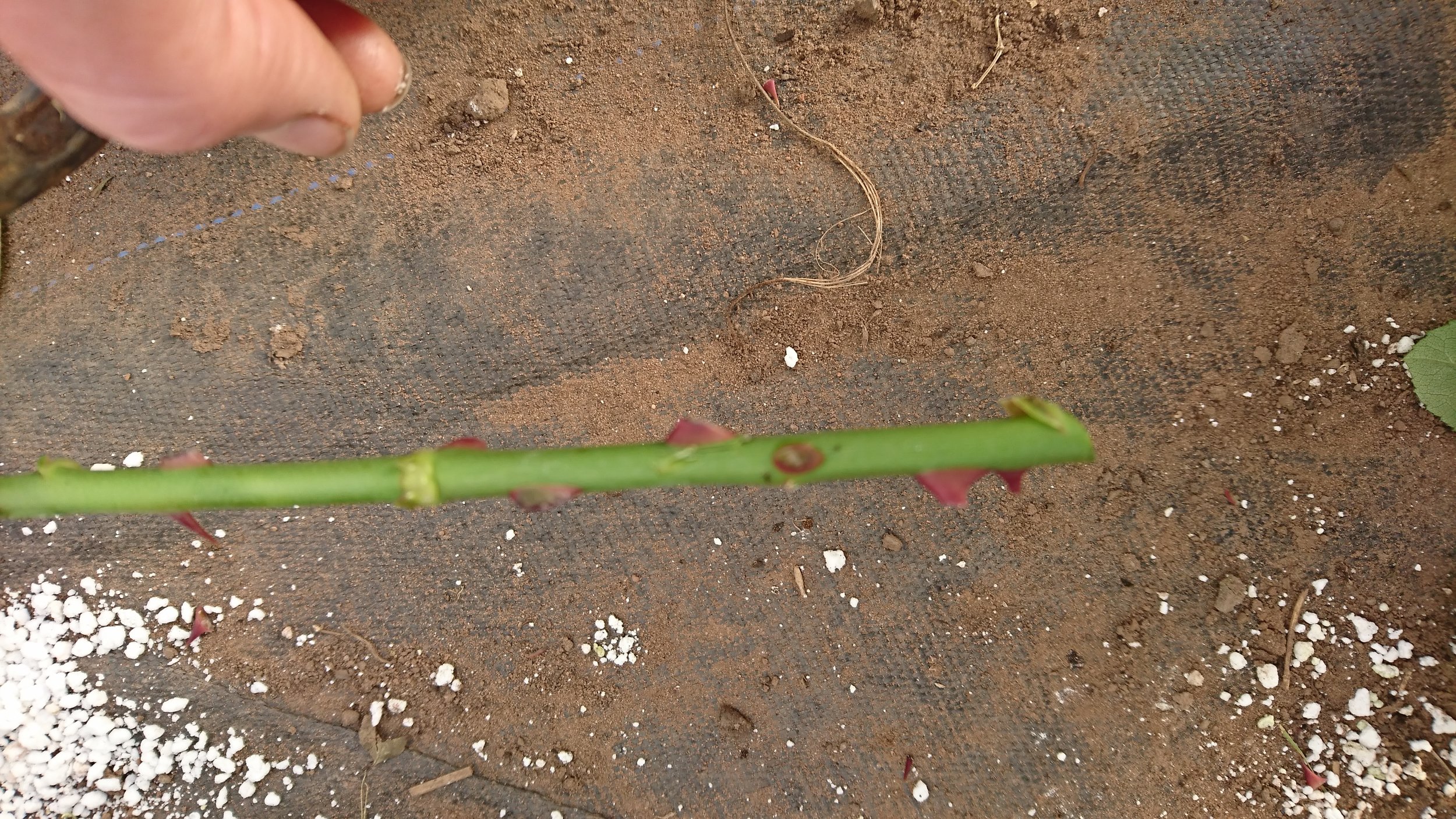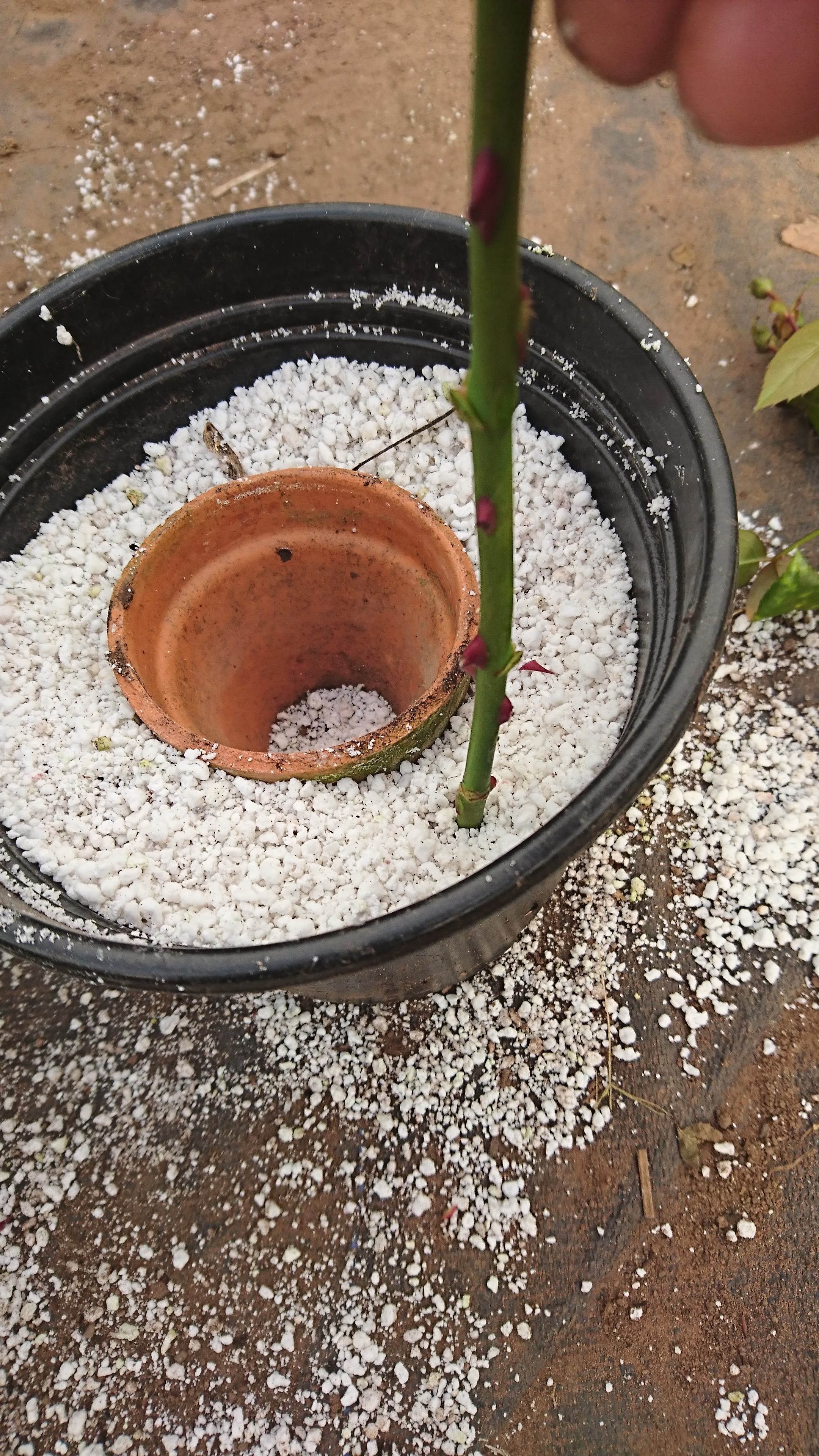Propagation
Rose hips are full of seeds
Growing from Seed
Most new varieties of rose start off as seed grown plants. All plants will set seed if they aren’t deadheaded or cut, forming a hip which contains the seed. Wait until the hip ripens and goes dark brown, then break it open to release the seeds. Plant in good quality seed compost and new plants should emerge. They won’t be the same as the parent plant as the flower will have been pollinated, so they will be a totally new variety - the possibilities are endless! If you get a really good variety, you can then propagate by taking cuttings, to increase the stock of your own unique rose.
Propagation from Cuttings
If you have roses already, it’s easy to make more of them by taking cuttings.
If you’re growing for commercial use (either to sell plants or the flowers grown from them) you can only propagate plants if they aren’t protected by PBR or Plant Breeders Rights. This is a form of new plant copyright and enables plant breeders to get a return on their investment in new plant development by controlling the sale and propagation of their plants. Most new varieties, and all of the ‘English Roses’ bred by David Austin are PBR protected so must not be propagated without a licence.
Any other roses can be multiplied by growing cuttings, which is pretty straightforward.
Cut a piece of rose stem between 10 and 20 cm
Make a slanted cut just below a leaf node at the bottom end of the stem
Remove leaves and cut just above a leaf node at the top of the stem
Fill a pot with compost
Slide the cuttings around the side of the pot
Place in a sheltered spot. They should root within around 6 weeks. Once they are growing pot on until big enough to plant out. The cutting (above) is around 6 months from propagation.
The slideshow below demonstrates a step by step method for potting up cuttings using an alternative 2 pot perlite method. Click on the photos to move it along.
Feeding and Watering
Roses are hungry and thirsty plants. To produce lots of great blooms they need the raw materials to produce growth in good quantities. One of our rose plants has produced over 60 long stems with stunning blooms this season. It wouldn’t be able to that without copious quantities of food and water.
We have a lot of visitors to the flower farm and they always comment on the health of the roses and ask for advice about their own roses. When I mention feeding them, the majority look puzzled, and a few look guilty. It’s rare that roses are fed more than a couple of times a year in most gardens, so it’s hardly surprising that they struggle or underperform.
We mulch our roses in the winter with a deep layer of organic matter. This provides a slow release fertiliser, improves and builds the soil so that it can absorb water and feed. We use whatever is readily available, usually well rotted horse manure, woodchip, pond weed or seaweed. This provides the basis of feeding only and we add to this weekly throughout the growing season with a liquid feed.
Feed your roses weekly. Get into a routine where you feed your roses on a particular day and don’t skip it. I feed and deadhead on Monday and water on Friday, the roses are usually cut on Wednesday. If you want good quality roses all season and healthy plants at the end of it, feeding is the key!
What to use to for weekly feeding is a matter of personal choice. You can buy specialist rose food or make your own compost tea. I place a big blue barrel near to the roses, fill it with plant material (seaweed, nettles, comfrey, grass clippings, etc) add half a bucket of manure and top it up with water. Within around 14 days it will be properly stinky and ready to use. I make sure the roses are well watered first, then apply one watering can of feed for every 8 bushes.
There are hundreds of branded rose feeds on the market, including some organic versions. They tend to contain varying proportions of Nitrogen, Phosphate and Potassium, which are necessary for plant growth. Advice on feeding often recommends feeding different chemicals at different times of the season with the idea that nitrogen produces vegetative, or top growth, phosphorous produces flower buds and potassium builds strong healthy plants. When we’re growing for cut flowers we’re asking the plants to produce new stems, leaves and flowers all season so it would seem sensible to make sure that the chemical mix is balanced, rather than focused on one particular element. A strong and healthy plant is what we’re aiming to support. Be aware too, that fertilisers high in phospates may interfere with the effectiveness of mycorrhiza. Fertilisers can be water soluble, pelleted or powder.
A good deep mulch for the winter will also break down to improve the soil and feed the plants
Roses don’t like to be dry. In very free draining soil they will struggle unless well watered. Try to improve your soil be adding lots of humus material and apply a deep mulch to prevent the soil drying out.
If they’re outside in an area with plenty of rain, they may not need additional water but keep a close eye on them and water if necessary. If you’re growing inside, in tunnels or greenhouses, a good drenching at least twice a week will be minimum in the summer. Don’t surface water lightly as that will not reach the roots, it’s much more effective to totally drench the soil less often.
Pruning for cut flowers
When to prune
Why do we prune roses? The stems of plants grow from thick at the base to thin at the top. Stems will grow to culminate in a flower and then sprout additional stems from there upwards. Without pruning, the stems end up progressively thinner and more spindly. If we cut them low down, the stems will be thicker and sturdier, plus there will be more produced by the plant.
It’s usual to prune garden bush roses in late winter or early spring and I did follow that advice initially. However, when I moved the plants indoors I pruned hard in November before digging them up and they did so much better. Pruning much earlier, in late autumn or early winter, means that the plants will flower earlier, particularly if they are under cover. Even in the winter, a plant will do some growing and if you leave them until March, then you’ll just be cutting that new growth off. In addition, if you prune in November/December, the plants suffer less from wind rock if outside and have a good base to start growing as soon as the conditions are right.
Here’s a short video looking at roses under protection at the end of the season, just before pruning:
I have seen advice to stagger pruning to stagger the flowering period, and this may work to a certain extent. What it does is delay growth of the plants that are pruned later. However, that means that the potential for those earlier flowers is lost and plants will probably produce fewer stems during the season as a whole. I find that having roses in different settings spreads the blooms across the season. So, bushes under cover will bloom here first in early May, followed by outdoor plants and by the time they are finishing their first flush, the protected roses will be ready to bloom again.
I now prune all roses before Christmas, and the indoor ones are pruned at the beginning of November. Climbing and rambling roses are slightly different as they usually are pruned to tidy the structure and tied in to supports. The stems should be brought to horizontal to encourage new stems that will then grow vertically into flowering stems.
See the videos below for demonstrations of pruning for cut flowers. There are 2 versions, the second one has a timelapse film of pruning the long rose bed.
Should you wait before cutting?
General advice on growing roses is to wait until year 3 before cutting blooms - as in the rhyme at the beginning of this course. The theory is that the plant will divert energy away from flowering to building a strong root system. This will only make a difference if the plants are rigorously dis-budded in years 1 and 2, otherwise all you have is a load of flowers wasted on the plant, and if they go to seed the situation will be worse. If you don’t let the plant flower, it will continue to send up new flowering stems and is likely to develop a more bushy habit.
Is this necessary?
Well, you’ll have to make your own decision, but this is my experience. I tend to prune the plants properly in the winter, tidying up any new ones as they are planted out. The feeding regime is the same, weekly feeding and plenty of water. As they grow in year 1, the first stems are short, but do form buds. I dis-bud these until the stems are long and the plant is growing vigorously. This is usually half way through the summer, depending on the variety. Once the stems are long, strong and looking good, I cut them. Waiting 3 years is not an efficient use of my time and space, and given the right care and conditions, I haven’t seen a huge difference in the health of the plant or its performance. It may be that the plants have a shorter overall useful life as cut flower shrubs and need replacing earlier but that’s fine with me.
Support
If you have varieties that have a tall or lax habit, grow under cover or are on a exposed site you may need to provide support for your plants. Roses can suffer from windrock and become loose at the base if they are buffeted about by gales. Some varieties such as the Crocus Rose are tall and the stems grow in an arc, so they need support to keep the blooms clean and off the ground.
You can stake each plant but that would mean putting stakes near to the roots and risking damage unless you do it before planting. We have our tunnel roses supported by a row of 2m stakes with a double row of fencing wire. The stems are either tied in to the wire or lean against it when they grow, which lets us move around the tunnel without being grabbed.
Pests and Diseases
There are many pests and diseases that affect roses and there are lots of publications that can provide treatment and cure options for each one so I’m going to cover them here in detail. The best cure is always prevention:
Buy good quality stock
Plant carefully in a sheltered, sunny position
Ensure good ventilation and airflow
Feed Feed Feed
Water well
Encourage biodiversity of plants and insects
Remove diseased and dead plant material
It’s easy to panic if you see a problem and head to bottles on the shelves of garden centres for an easy fix. Every year in early April we get the first aphids on the roses, but I’ve learned that if I wait a week we’ll also see the arrival of hover flies, and the spiders move in. This season we’ve also had dragonflies and damselflies hunting around the roses and in the polytunnels.
A keen eyed visitor spotted the signs of rose damage from the leaf cutter bee this year too. It’s quite an unusual insect so we were thrilled, despite the chunks it cut off the rose leaves! Make sure that you allow predatory insects to access your roses. If you screen the doors to polytunnels or greenhouses with mesh you’ll find that aphids manage to get in but bigger insects and birds that might feed on the aphids are kept out and you have an explosion of pests.
If you’re worried about greenfly on your roses and don’t already have a balanced ecosystem, you can buy juvenile predators through the post to get you started. The thing to remember when adding predatory insects to your plot is to make sure they have something to eat or they’ll just die off. So don’t be tempted to spray off the pests until they arrive, leave a few as a welcome banquet for your new workers and they’ll be encouraged to stick around.
Our approach is to an onslaught of pests and diseases is to feed the plants more, keep them vigorous and strong and then they’ll easily see off the attacks. Individual blooms can be protected physically with mesh bags, or cut just as they are opening to prevent bruising.


